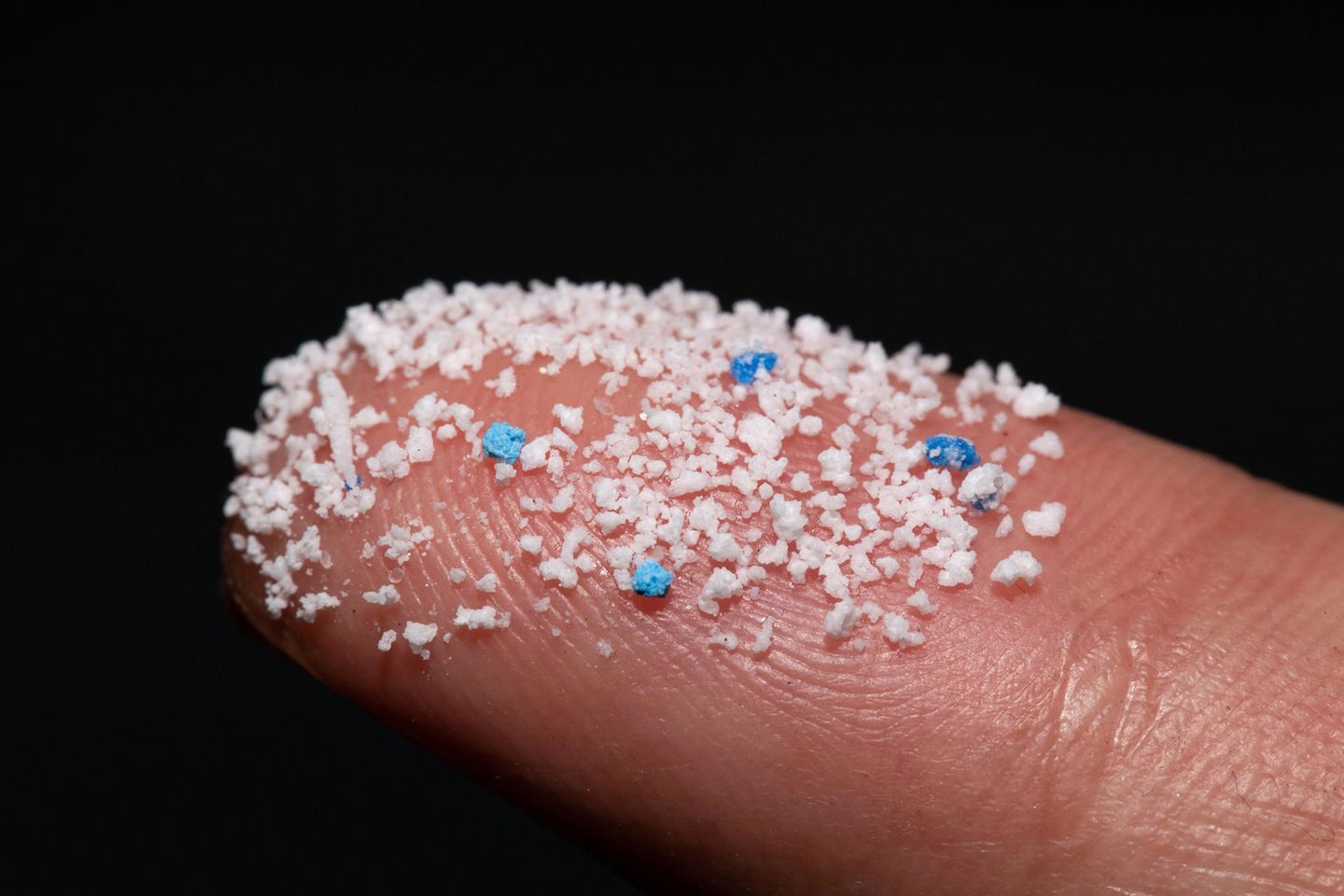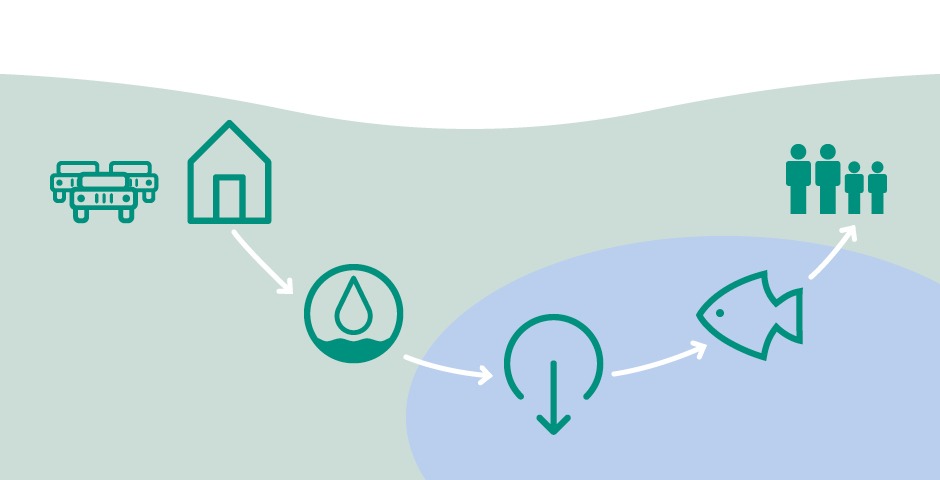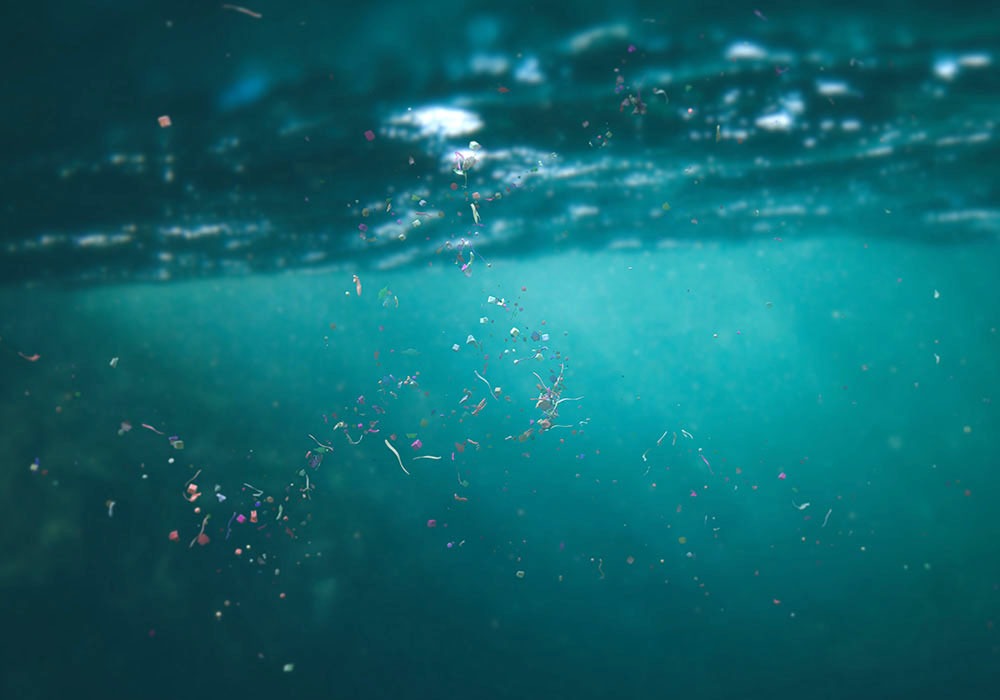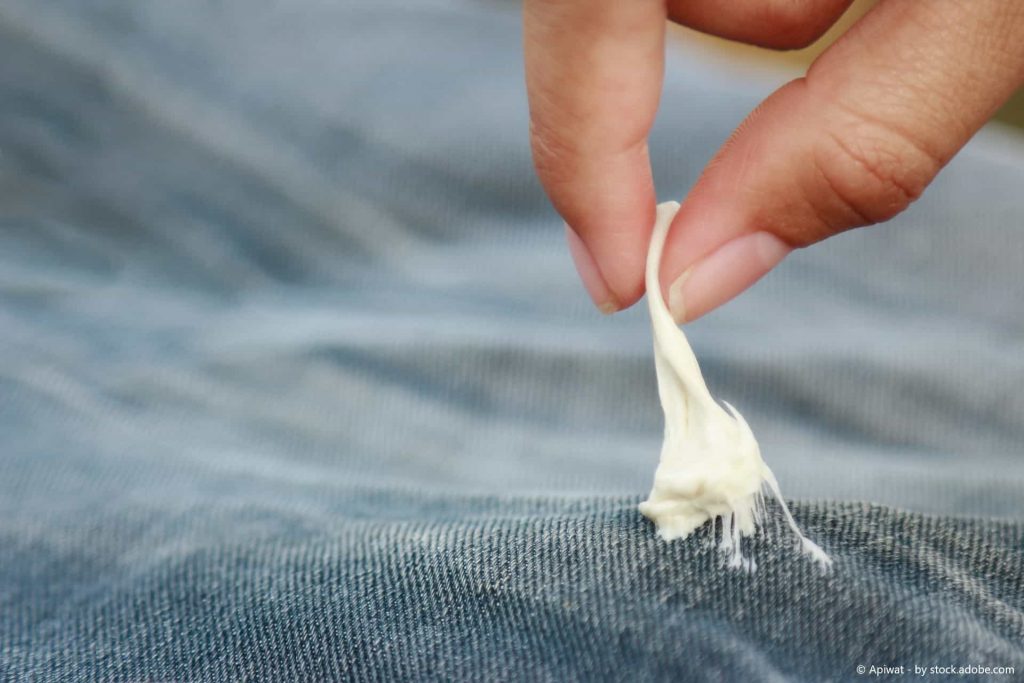We ingest 5 grams of microplastics per week
A study by the University of Newcastle (Australia) addresses the data gap regarding the impact of plastic pollution on the human diet. The study estimates the average amount of plastic that humans ingest at 5g per week, which is roughly equivalent to a credit card. The findings confirm concerns about the large amount of plastic we ingest every day.

Microplastics are absorbed through water and marine animals.
The largest source of plastic ingestion is drinking water. Plastics are found in water everywhere in the world (groundwater, surface water, tap water, and bottled water). In a study of bottled water that examined a limited number of locations around the world, all samples were found to contain plastics. As Figure 1 shows, a recent study indicates large regional differences, with twice as much fiber per 500 ml found in American or Indian water than in European or Indonesian tap water. Shellfish (but also fish) is another important source, accounting for up to 0.5 grams per week. This is due to the fact that shellfish are consumed whole, including their digestive system, after a lifetime in plastic-polluted seas.
A new study has detected microplastics in human blood for the first time. Three-quarters of those tested apparently had plastic in their blood, according to the study by the Free University of Amsterdam. The study was the first evidence that plastic particles can enter the human bloodstream. Earlier evidence of this came from laboratory experiments. The current study shows that people absorb microplastics from their environment in everyday life and that these amounts can be measured in the blood.
The total concentration of plastic particles in the blood of the 22 subjects averaged 1.6 µg/ml, which corresponds to one teaspoon of plastic in 1,000 liters of water (ten large bathtubs).

But what does chewing gum have to do with microplastics?
Well, that's quite simple. Almost all chewing gum consists for the most part, namely the chewing mass, of plastic. If the chewing gum is now spat out, then the chewing gum is pulverized over time with a lot of mechanical wear into small components and gets with the rain into the sewage and from there into the rivers, lakes and finally into the sea. And there the plastic comes back to us via the food chain...




